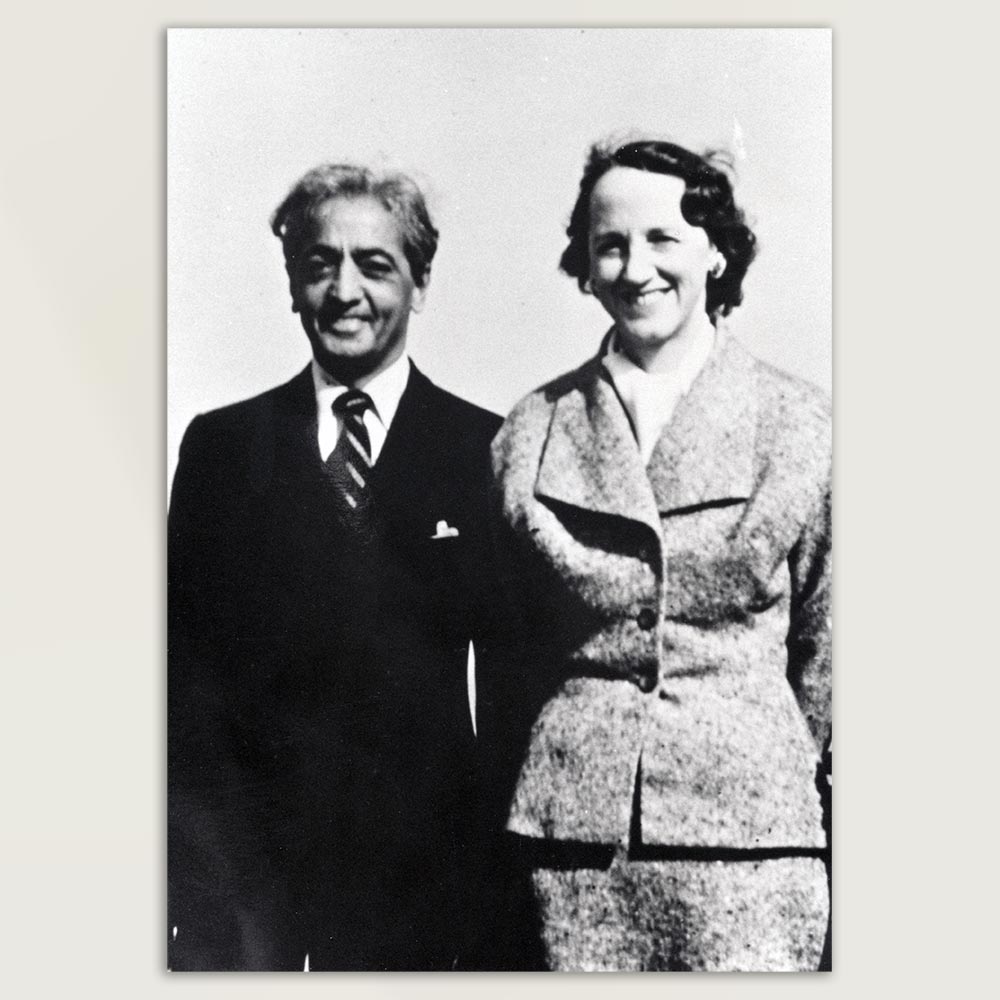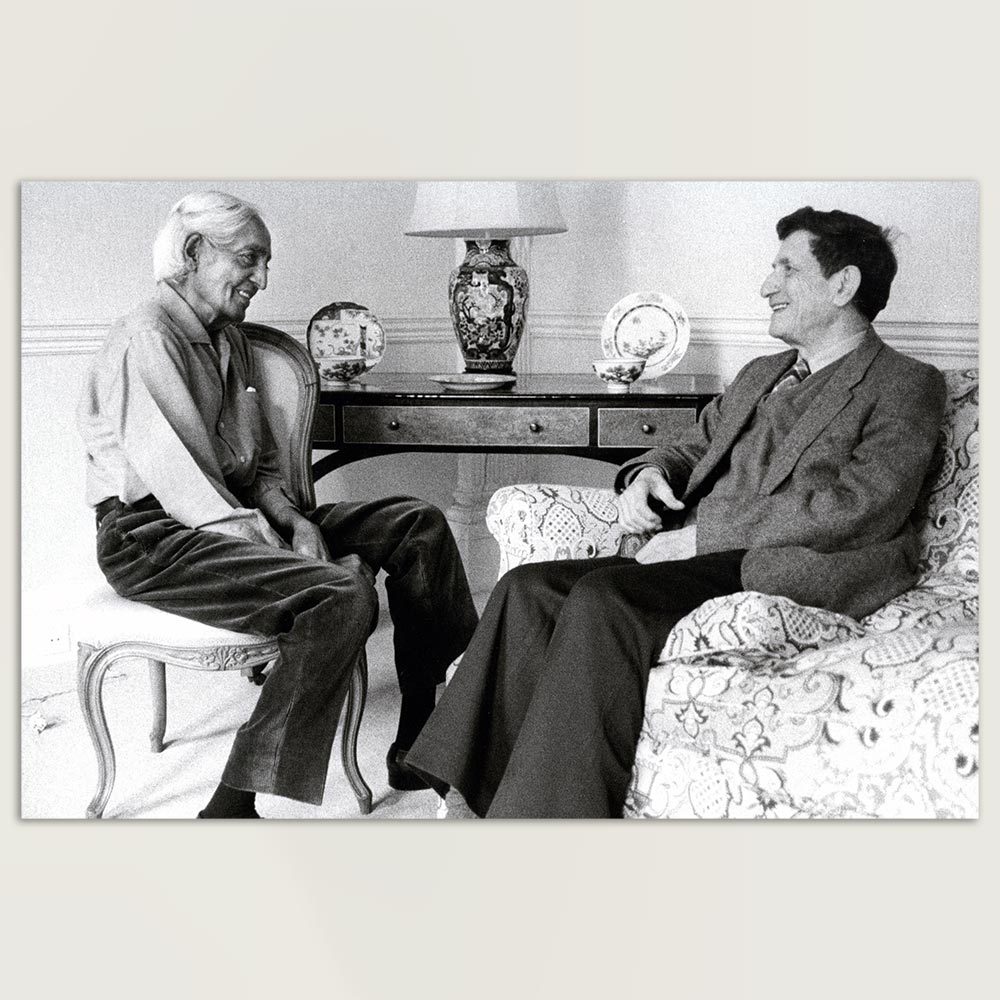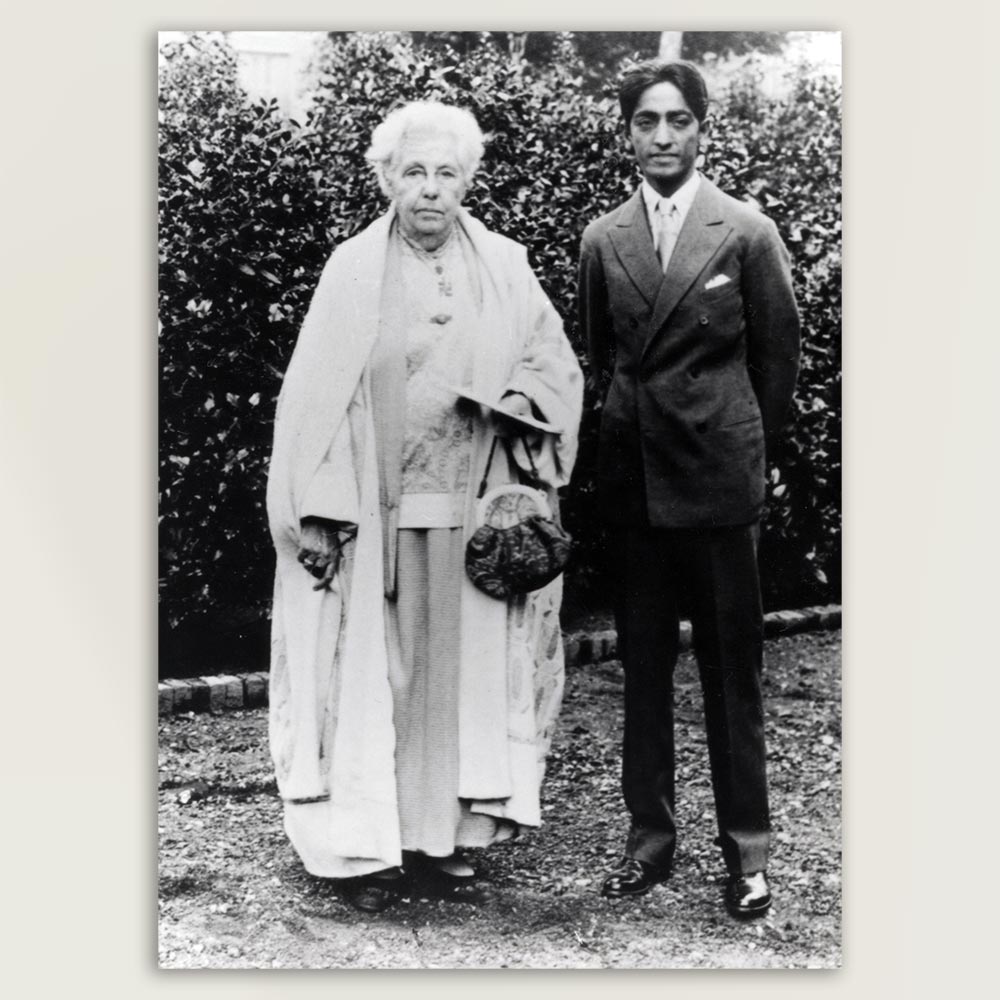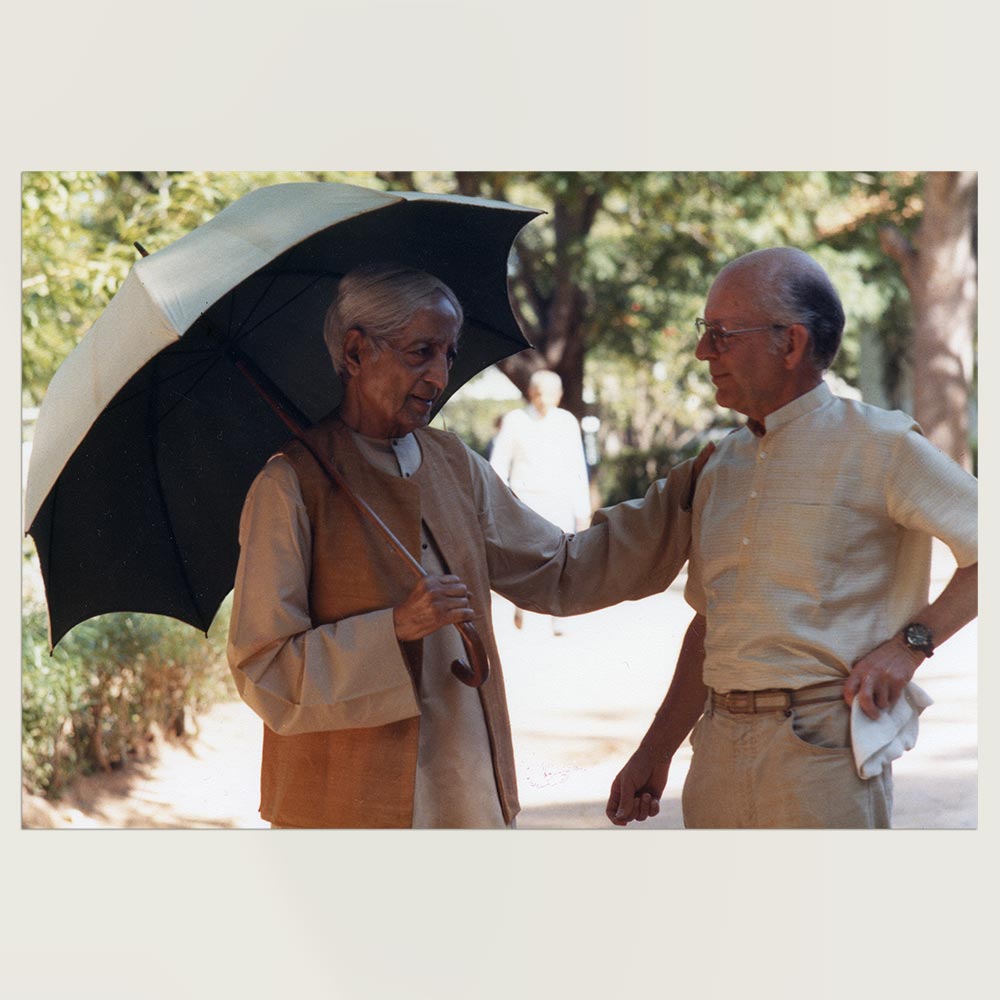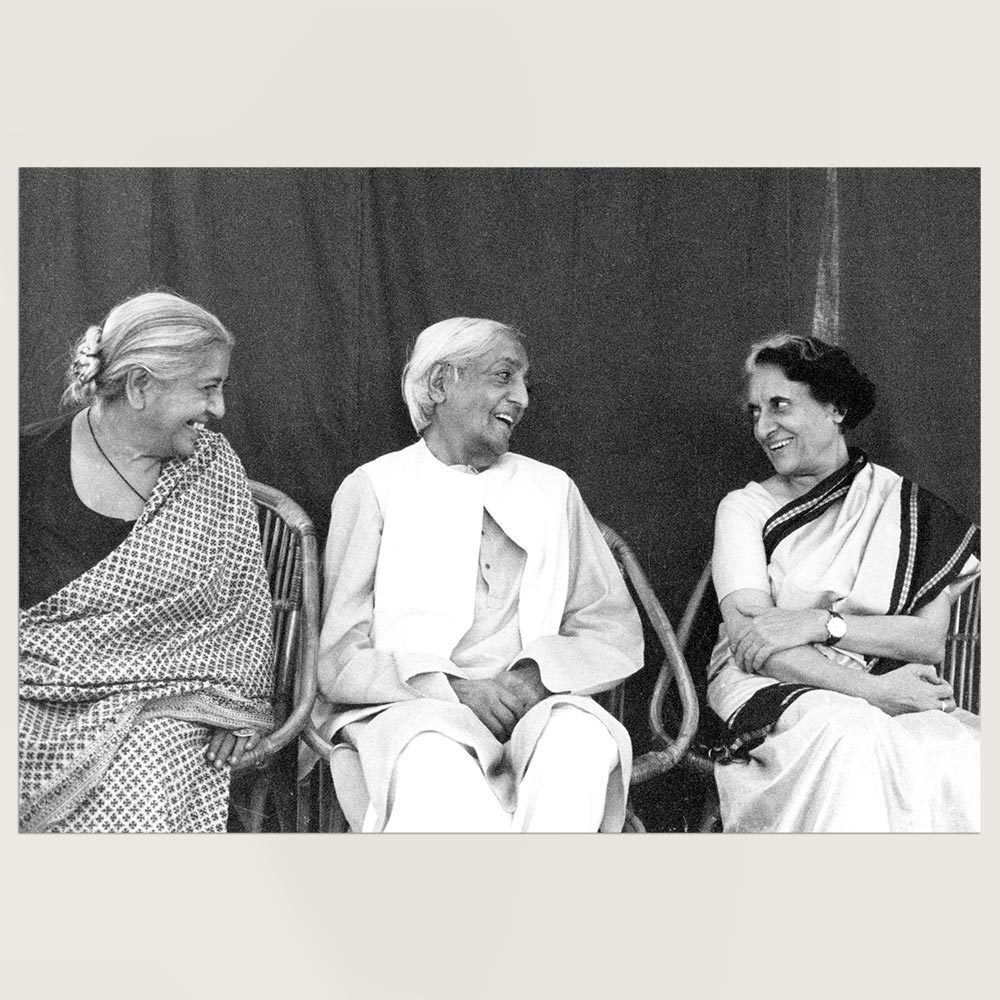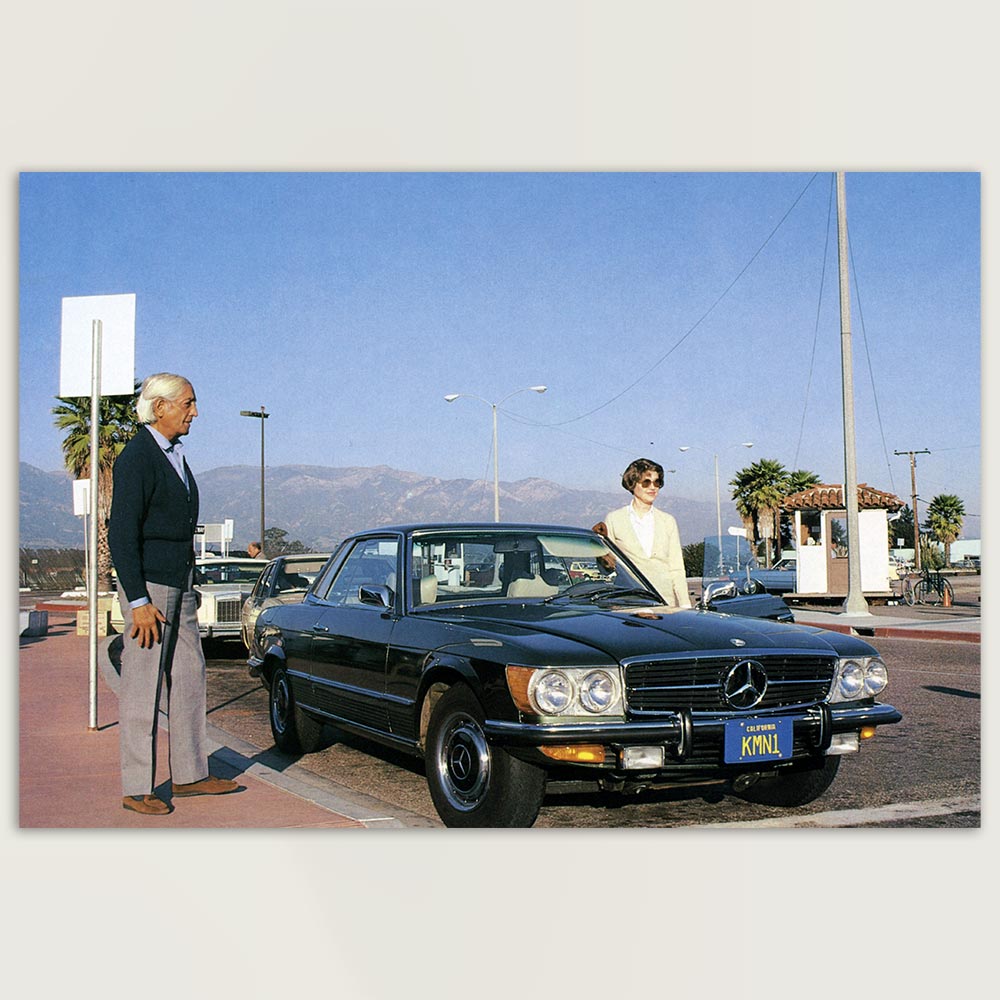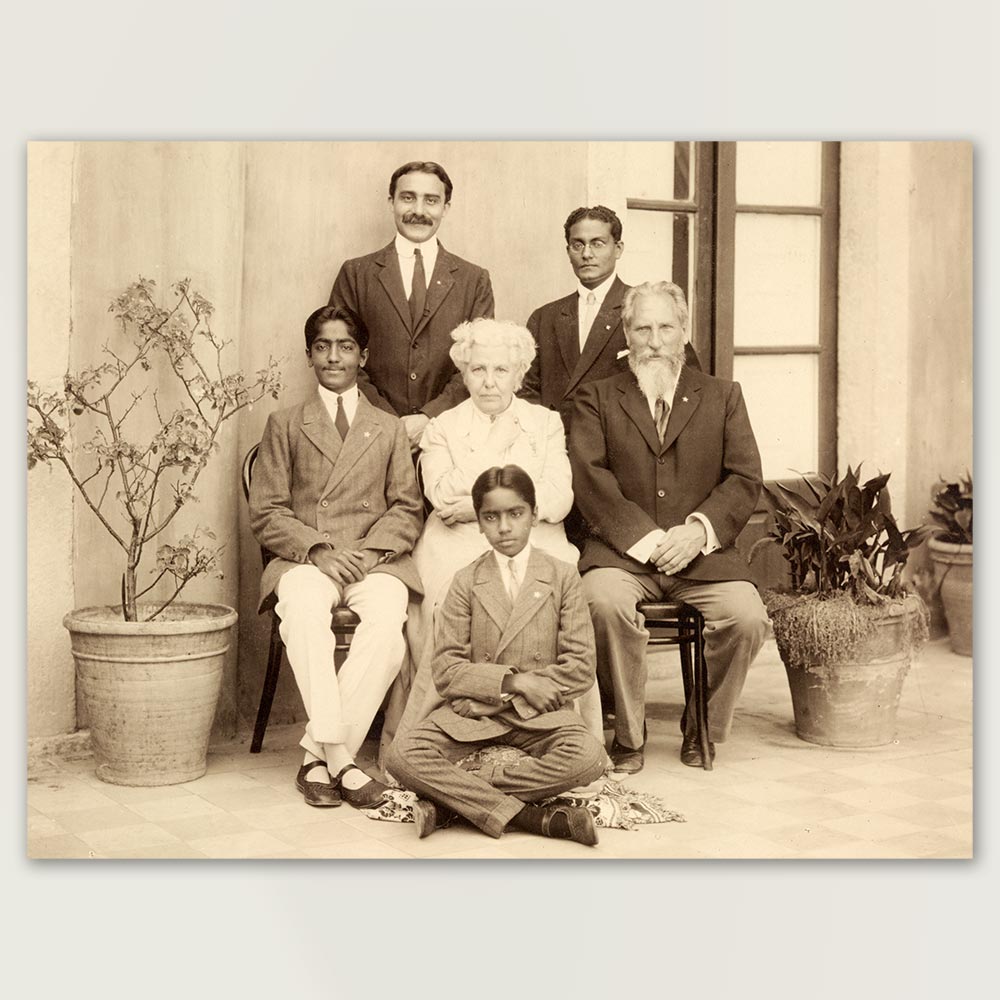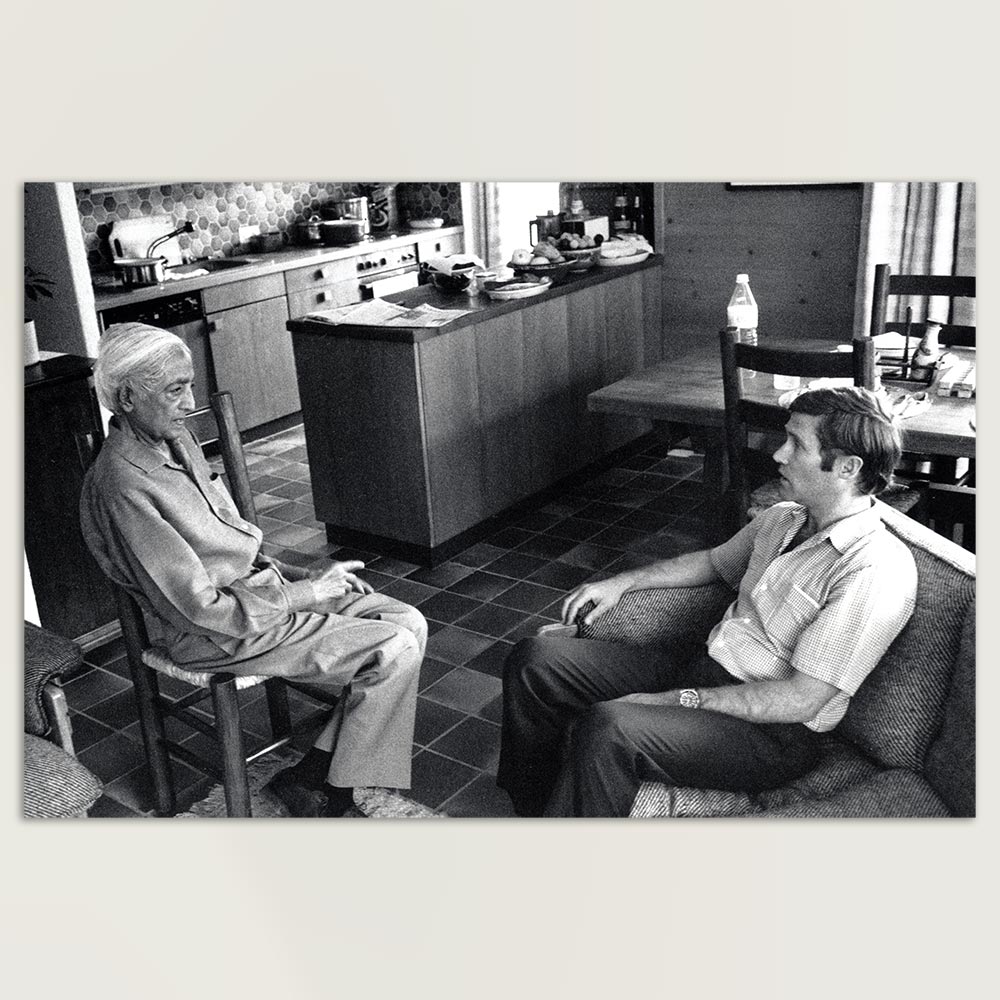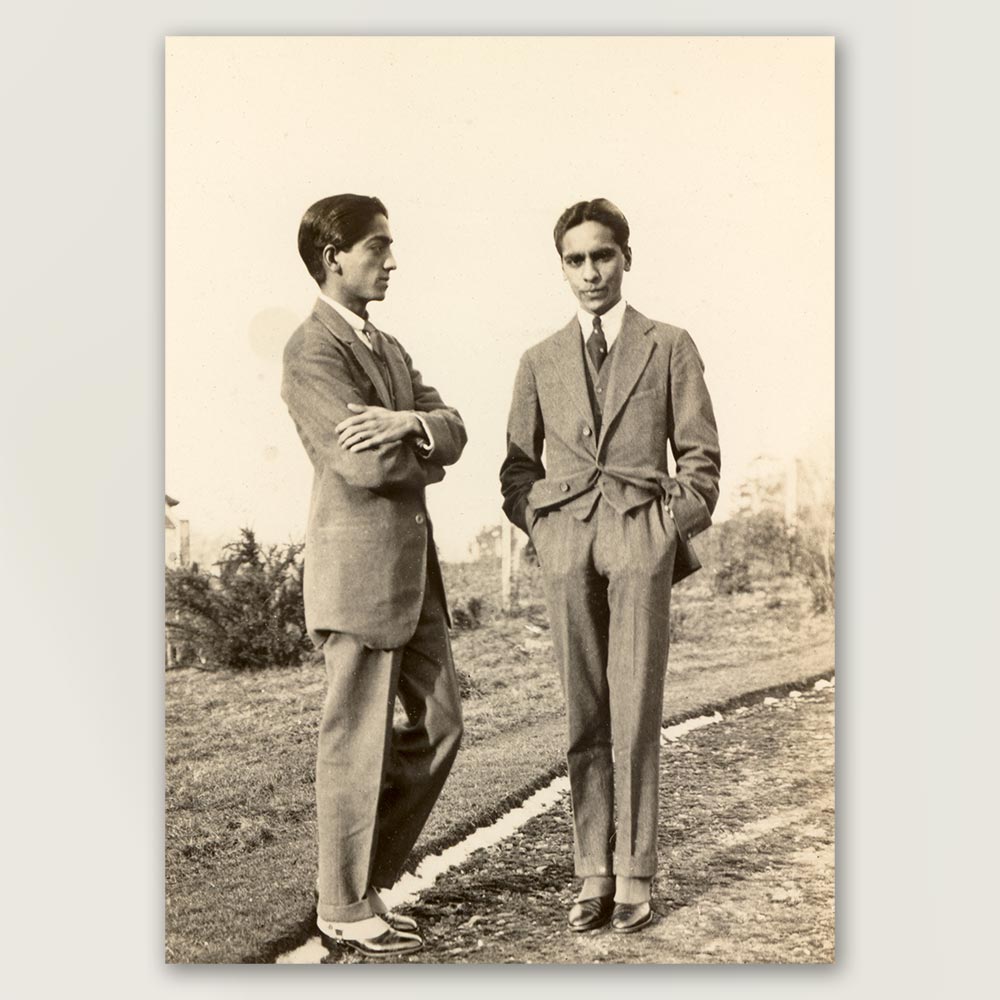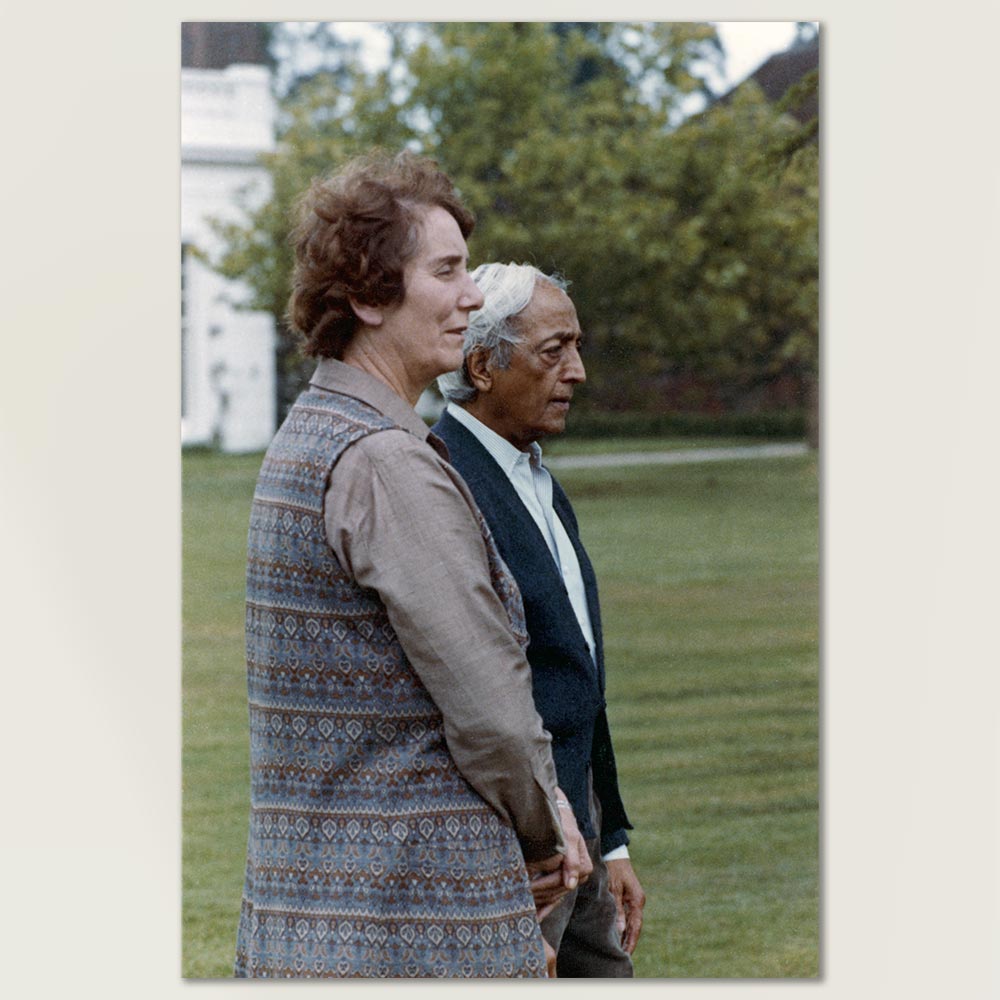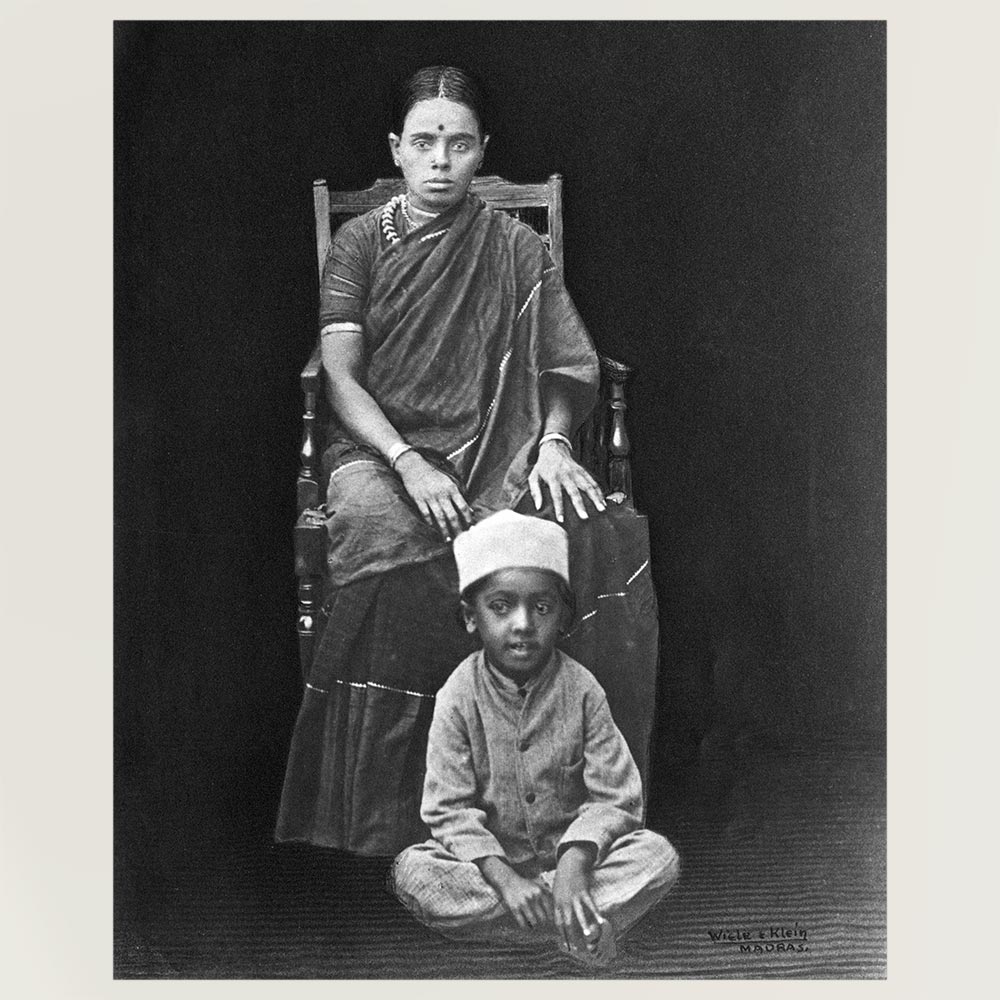
From the Archives, Vol. 8
Volumes 6 and 7 of From the Archives highlighted formal and informal portraits of Krishnamurti. Volume 8 also features photographs from our archive collection, this time showing Krishnamurti with some of those closely associated with him, individually or in groups. The thirteen photos span the course of his life, from the early 1900s to the 1980s, and were taken in India, Europe and the United States, with an emphasis on Europe. Many of the photographs are previously unpublished and are available here for the first time. Please note that this collection is not exhaustive; many of those close to Krishnamurti are not featured here, and many well-known people who knew him were not photographed with him. Biographical and contextual information accompanies each photograph.
Krishnamurti with Mary Lutyens, Scheveningen, 1953. Photographer unknown. Born in 1908, Mary Lutyens knew Krishnamurti her whole life. She met him soon after he arrived in England in 1911, thanks to her mother’s (Lady Emily Lutyens) position in the Theosophical Society. Mary and other young theosophists were close to Krishnamurti and his brother through the 1910s and 20s. In the 1970s, Krishnamurti asked Mary to write his biography, published in three volumes. The Years of Awakening (1975), was followed by The Years of Fulfilment (1983) and The Open Door (1988).
Krishnamurti with David Bohm, Brockwood Park, 1983. Photograph by Mark Edwards. Krishnamurti’s friendship with physicist David Bohm began in the 1960s. After working with Oppenheimer and discussing with Einstein, Bohm became increasingly interested in mysticism and saw parallels between what Krishnamurti was saying and quantum physics. Their association led to many ground-breaking and insightful conversations spanning three decades, the most well-known series being published in 1985 as The Ending of Time (also available as audio and video on our YouTube channel).
This photograph was taken in Madras in January 1986, less than six weeks before Krishnamurti died. Krishnamurti visited schools and centres in India almost every year during the winter and maintained long friendships and associations with many people in the subcontinent. Those pictured here include Asit Chandmal, Ahalya Chari, Rajesh Dalal, Radhika Herzberger, Padmanabhan Krishna, Nandini Mehta, Giddu Narayan, P.K. Parchure, Achyut, Pama & Sunanda Patwardhan, and Jagannath Upadhyaya. Photograph by Mark Edwards.
Krishnamurti with Annie Besant, Arnhem, 1924. Photographer unknown. Annie Besant was Krishnamurti’s adoptive mother, and a strong bond grew between them during Krishnamurti’s time in Europe in the 1910s and 20s. Born in 1847, Besant advocated social change and women’s rights, and became interested in theosophy in the 1890s. She became head of the Theosophical Society in 1907 and was a strong proponent of the coming of the World Teacher, whom she believed Krishnamurti to be.
Krishnamurti and Fredrich Grohe, Rishi Valley, 1983. Photograph by Rita Zampese. Friedrich Grohe first heard Krishnamurti speak in the early 1980s and soon started to attend his talks around the world. Since Krishnamurti’s death, Friedrich and a small team have enabled connections between many people interested in the teachings and supported various projects at the schools and foundations, not least financing build of The Krishnamurti Centre at Brockwood Park.
Krishnamurti with Pupul Jayakar (left) and Indira Gandhi at Rishi Valley, 1980. Photograph by M.A. Hamid. Pupil Jayakar met Krishnamurti in 1948 and was asked by Krishnamurti to write a biography (published in 1986) focussing on his time in India. Indira Gandhi was India’s Prime Minister from 1966 to 77 and 1980 to 84. A friend of Jayakar’s, Gandhi corresponded with Krishnamurti, and they met for private meetings several times. Krishnamurti didn’t directly involve himself in politics but was highly aware of the difficulties faced in India and beyond.
Krishnamurti with friends in Paris, 1937. Photographer unknown. Those pictured with Krishnamurti include Marcelle & Yolande Manziarly and Carlo & Nadin Suarès. Krishnamurti befriended the Manziarly family when living in Paris, and Marcelle & Yolande became constant companions, leading to lifelong friendships. Carlo Suarès wrote many books about Krishnamurti, including Krishnamurti and the Unity Of Man and translated many of his books into French.
Krishnamurti with Mary Zimbalist, California, 1980. Photograph by Asit Chandmal. As personal assistant, travelling companion, trustee and friend, Mary Zimbalist was central to Krishnamurti’s life from the mid-1960s until his death. From early on in their relationship, Mary was of great help to Krishnamurti in many ways. As Mary put it, she was simply ‘being useful when things were needed for a person for whom you had great regard and wanted to help in any way you could.’
Krishnamurti with George Arundale, Annie Besant, C. Jinarajadasa, C.W. Leadbeater, and Jiddu Nityananda (Nitya). Photographer unknown. Arundale played a considerable part in Krishnamurti’s early life, being his private secretary in The Order of the Star and his educational tutor, along with Jinarajadasa. Leadbeater is credited with the discovery of Krishnamurti as the ‘vehicle’ for the coming of the World Teacher. As Krishnamurti became more independent and distanced himself from theosophical hierarchies and ceremonies, Leadbeater said, ‘The coming has gone wrong.’
Krishnamurti with Scott Forbes, Rougemont, 1985. Photograph by Mark Edwards. Scott Forbes was close to Krishnamurti from the 1970s. He pioneered the regular video recording of Krishnamurti’s talks in Brockwood and Saanen, together with Kathy Forbes. After Krishnamurti began to speak about a study centre at Brockwood, Scott was central to the planning and building of The Krishnamurti Centre, along with running Brockwood Park School. More recently, Scott published Mary Zimbalist’s memoirs In the Presence of Krishnamurti.
Krishnamurti and his younger brother Nitya in Amphion, 1920. Photographer unknown. Nitya was Krishnamurti’s closest brother and companion, the pair forming an unshakable bond until Nitya’s untimely death five years after this photograph was taken. Nitya came to Europe from India with Krishnamurti and, unlike Krishnamurti, went to university and became a lawyer, before he fell ill. His death was a turning point for Krishnamurti, to whom theosophists had promised that Nitya was protected.
Krishnamurti with Dorothy Simmons, at Brockwood Park c.1980. Photographer unknown. Dorothy Simmons was the first principal of Brockwood Park School, founded by Krishnamurti in 1969. She shared Krishnamurti’s view that education was much more than training young people for societal roles or achieving academic excellence. Previously a sculptor and having worked in a state school, Dorothy saw Brockwood through the inevitable challenges it faced over the years, developing it from just a few students into a unique and flourishing school.
Taken around 1900, this is the earliest known photograph of Krishnamurti and perhaps the only one of Krishnamurti with his mother. Jiddu Sanjeevamma had eleven children and died of malaria when Krishnamurti was ten years old. Unusually, she chose their house’s puja or prayer room to give birth. Being the eighth child, Krishnamurti was named after Sri Krishna as per tradition. Little is known of Sanjeevamma, but she was devout and charitable, liked to sing, and was considered a psychic who experienced visions. Studio: Wiele & Klein, Madras.
A gallery of Krishnamurti photographs is also available.

